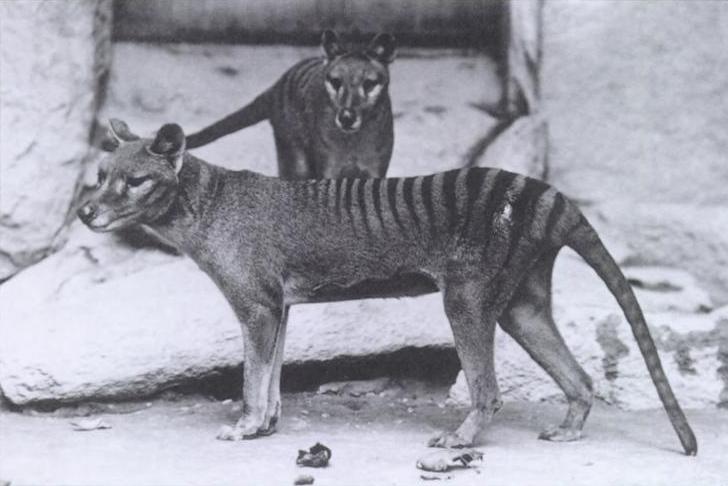Tasmanian Tigers Wrongly Convicted of Killing Sheep

The now-extinct Tasmanian tiger was hunted out of existence in the early 1900s for killing Australian farmers' sheep. But a new study finds that the tiger was framed. In fact, the animals' jaws were so weak that they likely couldn't have hunted anything larger than a possum.
The Tasmanian tiger, also known as the thylacine, was a carnivorous marsupial that looked like a cross between a hyena and a tiger, complete with a smattering of stripes across its back. (Adding to this strange mishmash of features, it also had a possum-like pouch and a stiff, kangaroo-like tail.)
Thylacines were already close to extinction on the Australian mainland by the time European settlers arrived in the late 1700s, but they continued to survive on the island of Tasmania — at least until the government began putting bounties on dead thylacines, blaming them for attacks on sheep. The last known Tasmanian tiger died at the Hobart Zoo in Tasmania in 1936.

The new study, published today (Aug. 31) in the Journal of Zoology, used computer modeling to simulate biting, tearing and other predatory behaviors and their effect on the Tasmanian tiger skull. The researchers also compared the results to the same tests in two other Australian marsupial carnivores, the Tasmanian devil and the spotted-tail quoll. Tasmanian devils and Tasmanian tigers were closely related, but the tigers were larger and sleeker, with a more dog-like appearance.
The result showed that the Tasmanian tiger's skull would have been highly stressed by biting down on struggling prey. Tasmanian tigers simply didn't have much jaw power, said study author Marie Attard, of the University of New South Wales.
"Our research has shown that its rather feeble jaw restricted it to catching smaller, more agile prey," Attard said in a statement. "That's an unusual trait for a large predator like that, considering its substantial 30 kg [66 pound] body mass and carnivorous diet."
It's likely that Tasmanian tigers were competing with other marsupial predators to hunt for smaller marsupials, such as wallabies and possums, the researchers suggest. This specialization could have made thylacines highly vulnerable to alterations in the ecosystem, such as the arrival of Europeans, who viewed the animals as nuisances at best.
Sign up for the Live Science daily newsletter now
Get the world’s most fascinating discoveries delivered straight to your inbox.
"As for its supposed ability to take prey as large as sheep," Attard said of the Tasmanian tiger, "our findings suggest that its reputation was, at best, overblown."
You can follow LiveScience senior writer Stephanie Pappas on Twitter @sipappas. Follow LiveScience for the latest in science news and discoveries on Twitter @livescience and on Facebook.

Stephanie Pappas is a contributing writer for Live Science, covering topics ranging from geoscience to archaeology to the human brain and behavior. She was previously a senior writer for Live Science but is now a freelancer based in Denver, Colorado, and regularly contributes to Scientific American and The Monitor, the monthly magazine of the American Psychological Association. Stephanie received a bachelor's degree in psychology from the University of South Carolina and a graduate certificate in science communication from the University of California, Santa Cruz.










